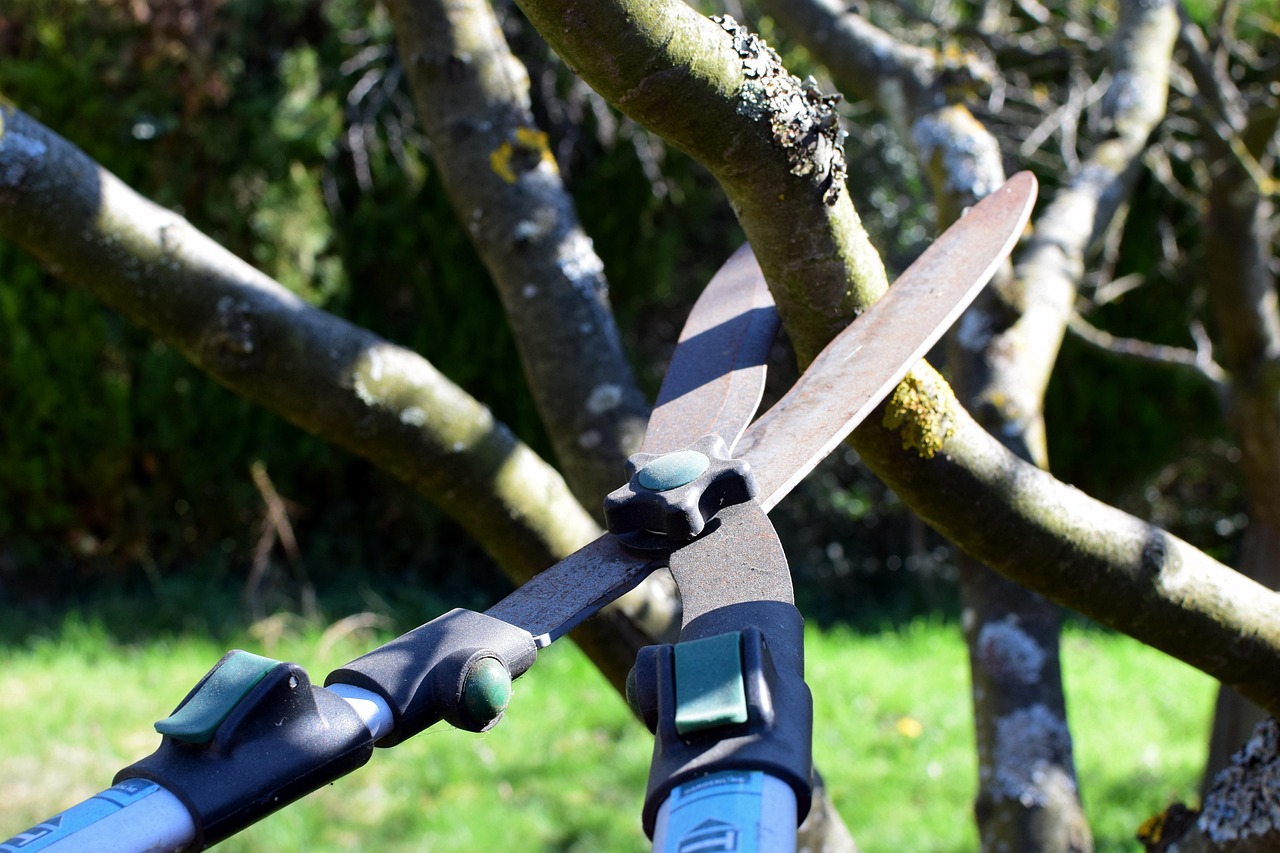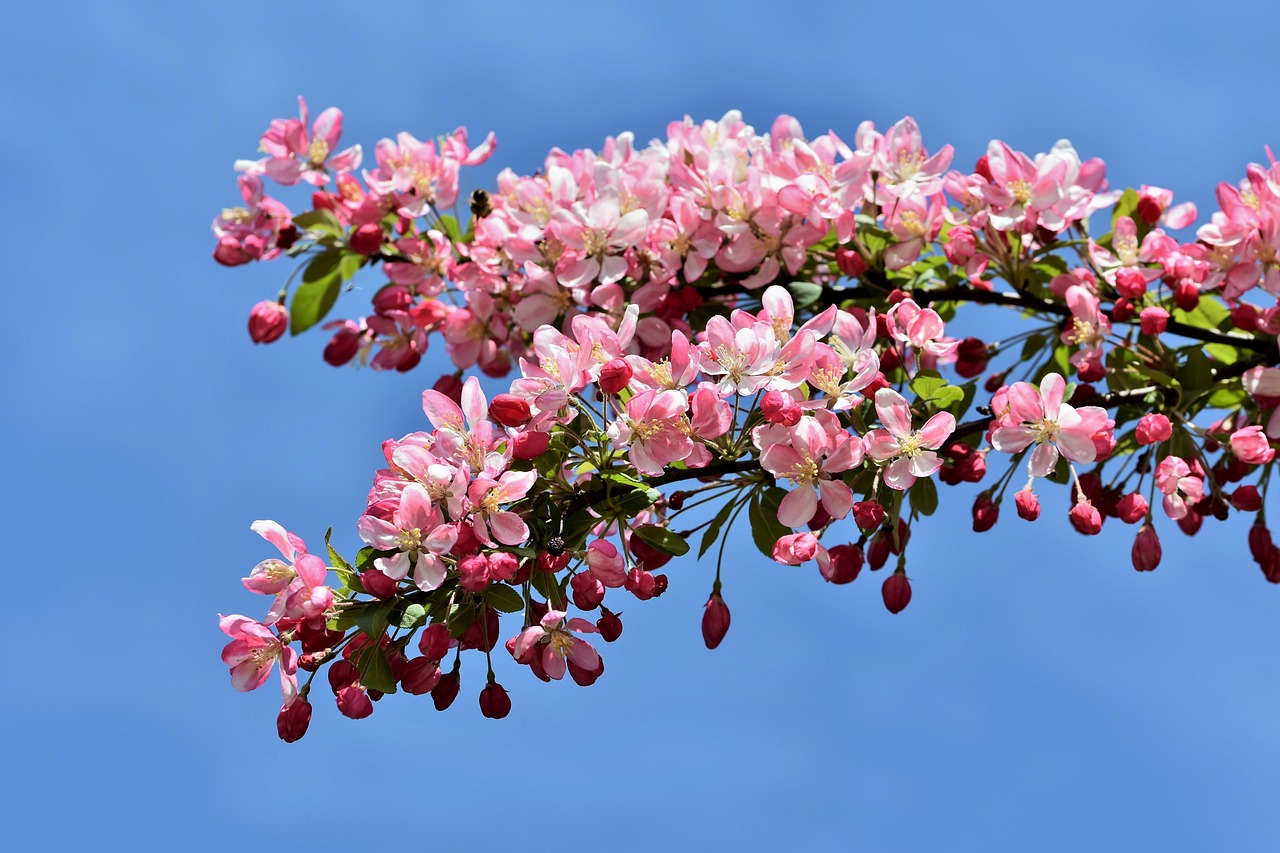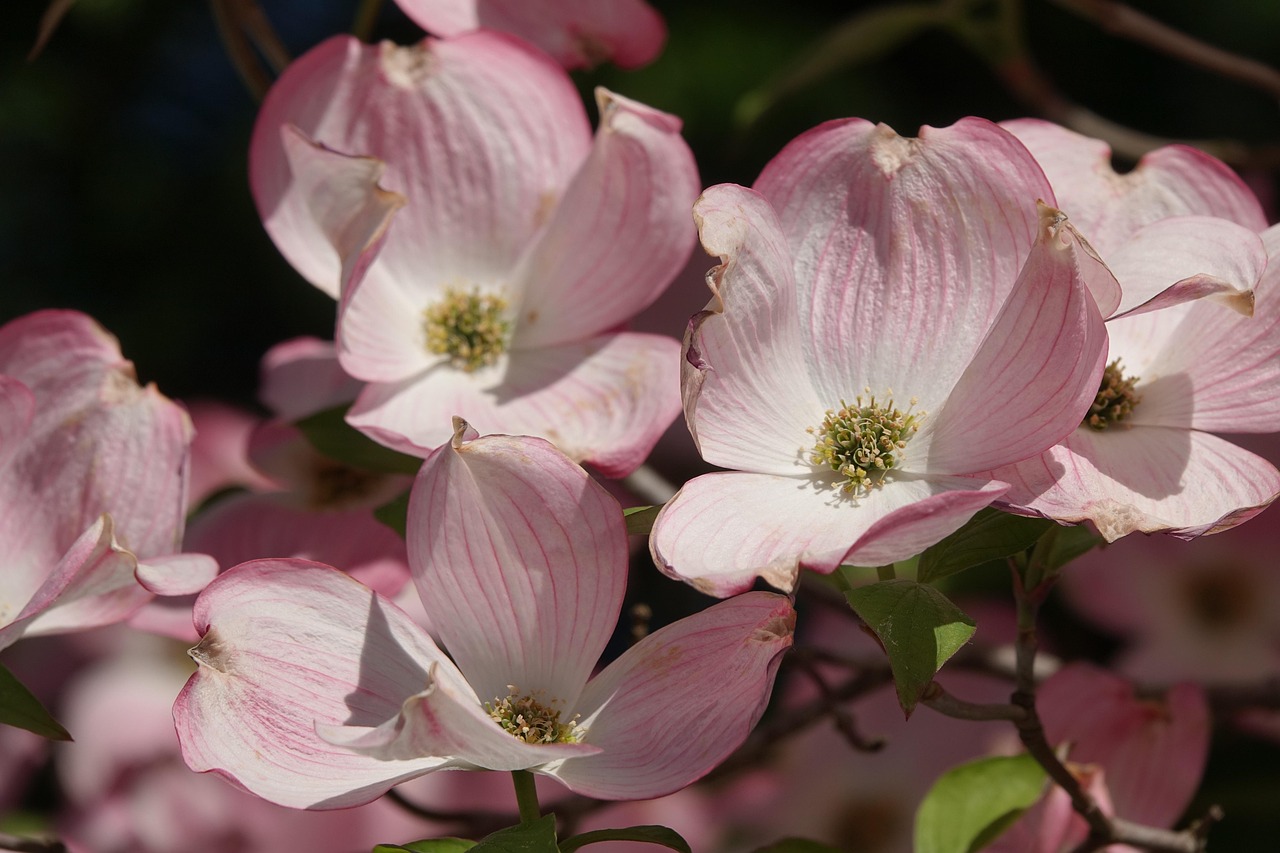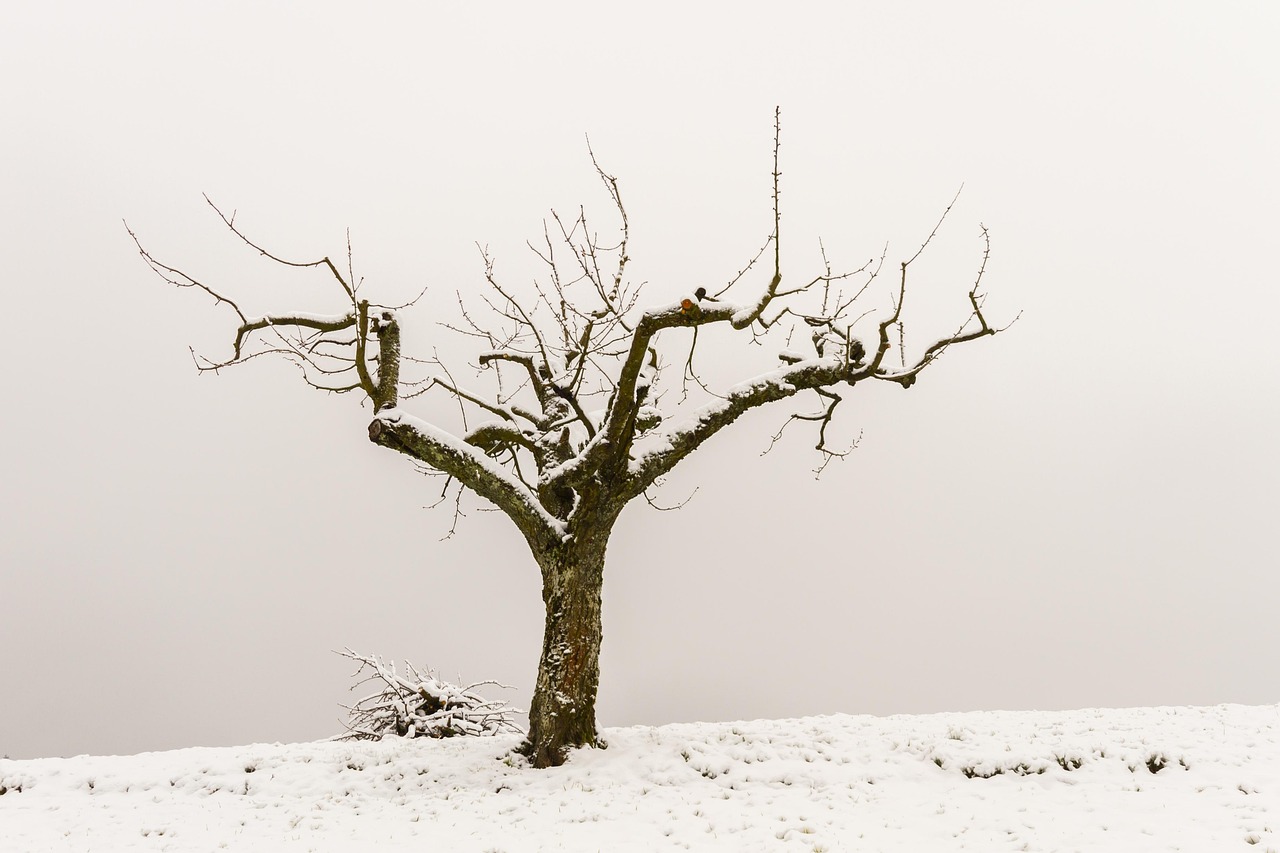Pruning crabapple trees is crucial for fostering healthy growth and enhancing wildlife habitats. These trees not only beautify landscapes but also support ecosystems by providing fruit and shelter. Effective pruning promotes tree structure, boosts fruit production, and enhances biodiversity, making crabapple trees vital components of both urban and rural wildlife corridors.
Crabapple trees (Malus spp.) are not only beautiful additions to landscapes but also vital for supporting local ecosystems. These trees produce an abundance of small fruits that attract birds, insects, and other wildlife. When managed correctly through pruning, crabapple trees can create effective wildlife corridors, enhancing biodiversity in both urban and rural settings. Pruning is an art as much as it is a science, requiring knowledge of tree health and wildlife needs.

Wildlife corridors are essential pathways that enable animals to move safely between different habitats. Properly pruned crabapple trees can serve as these corridors, providing shelter and resources along their paths. The goal of pruning is to enhance the tree’s structure while ensuring it remains a refuge for wildlife. This practice not only benefits the trees themselves but also improves the overall health of the ecosystem.
Benefits of Crabapple Trees in Wildlife Corridors
Crabapple trees offer numerous advantages in creating wildlife corridors. Their flowers provide nectar for pollinators in spring, while the fruit serves as food for various animal species in the fall. Below are some key benefits:
- Nectar Source: The blossoms attract bees and butterflies, supporting pollination.
- Fruit Production: The small apples feed birds, deer, and other animals during the fall and winter months.
- Habitat Structure: The branches offer nesting sites for birds and shelter for small mammals.
- Aesthetic Value: Their beautiful flowers and fall colors enhance the landscape.
To maximize these benefits, it is important to understand the best practices for pruning crabapple trees. Proper techniques not only promote healthy growth but also ensure that these trees can continue to support a variety of wildlife species effectively.

Pruning Techniques for Healthy Crabapple Trees
Effective pruning involves several techniques aimed at improving the health and structure of crabapple trees. Here are some key methods:
- Thinning: This process involves removing selective branches to increase light penetration and air circulation within the canopy.
- Heading Back: This technique shortens branches to encourage new growth and maintain the desired shape of the tree.
- Cleaning: Remove dead, damaged, or diseased wood to prevent the spread of pests and diseases.
- Shaping: Create a balanced structure by trimming branches that disrupt the tree’s natural form.
When performing these techniques, timing is essential. The best time to prune crabapple trees is during late winter or early spring before new growth begins. This timing reduces stress on the tree and minimizes the risk of disease transmission. Furthermore, it allows for better visibility of the tree’s structure, making it easier to identify which branches need attention.
Seasonal Considerations for Pruning
Seasonality plays a crucial role in the success of pruning efforts. Different seasons bring unique challenges and opportunities for caring for crabapple trees within wildlife corridors.

| Season | Pruning Focus | Wildlife Considerations |
|---|---|---|
| Winter | Remove dead or damaged branches | Avoid disturbing nesting birds |
| Spring | Shape and thin branches | Promote flowering for pollinators |
| Summer | Monitor growth; minor adjustments | Observe wildlife activity for habitat improvement |
| Fall | Post-harvest cleanup; remove fallen fruit | Support animals feeding on fruit |
By understanding these seasonal considerations, tree care providers can make informed decisions that enhance both the health of the crabapple trees and their role in supporting wildlife corridors. Each season presents unique opportunities to assess tree health and plan appropriate care strategies.
The integration of crabapple trees into wildlife corridors not only benefits local ecosystems but also fosters a connection between people and nature. As communities become more aware of these practices, they can engage in creating environments that support diverse wildlife while enjoying the beauty these trees provide.
Choosing the Right Crabapple Varieties
When establishing a wildlife corridor, selecting the right variety of crabapple tree is essential. Different species and cultivars have unique characteristics that can influence their effectiveness in supporting wildlife. Here are some popular varieties to consider:

- Malus ‘Dolgo’: Known for its large fruit and strong growth, this variety attracts many birds and can tolerate various soil types.
- Malus ‘Prairifire’: This cultivar is recognized for its stunning spring blossoms and resistance to disease, making it a favorite among gardeners.
- Malus ‘Spring Snow’: Featuring beautiful white flowers, this variety produces little to no fruit, reducing cleanup but still providing excellent shelter.
- Malus ‘Centennial’: This tree is known for its abundant fruit production and vibrant fall foliage, making it highly attractive to wildlife.
When choosing a variety, consider factors such as local climate, soil conditions, and the specific wildlife species you wish to attract. Researching the characteristics of each variety will help you make an informed decision that supports both your aesthetic goals and the needs of wildlife.
Pruning Tools and Techniques
Using the right tools is critical for effective pruning. Proper equipment ensures clean cuts and reduces stress on the tree. Here are some essential tools for pruning crabapple trees:
- Hand Pruners: Ideal for small branches, providing precision for detailed work.
- Loppers: Useful for cutting thicker branches that are too large for hand pruners.
- Saws: A pruning saw or chainsaw may be required for larger limbs that need removal.
- Climbing Gear: In cases where higher branches need attention, use harnesses and ropes for safety.
Maintaining these tools is equally important. Regularly sharpen blades to ensure clean cuts. Clean your tools after each use to prevent the spread of disease between trees. Here are some common techniques used in pruning:
- Angle Cuts: Make cuts at a 45-degree angle to promote quick healing and reduce water accumulation on the cut surface.
- Make Clean Cuts: Avoid tearing the bark when cutting branches. Use sharp tools for a smooth finish.
- Leave Stubs: Always avoid leaving stubs when pruning; they can become entry points for pests and diseases.
Encouraging Biodiversity Through Pruning Practices
Pruning not only benefits the health of crabapple trees but also encourages biodiversity within wildlife corridors. By creating varied structures and open spaces, you can foster diverse habitats. Here’s how pruning influences biodiversity:
- Diverse Canopy Layers: Different levels of growth allow various species to thrive, from ground-dwelling creatures to tree-dwelling insects and birds.
- Increased Sunlight: Thinning out branches opens up the canopy, allowing sunlight to reach lower plants, thus promoting growth and food sources.
- Enhanced Foraging Opportunities: Well-pruned trees can produce more fruit, providing ample food sources for various wildlife.
Additionally, consider integrating native plants around crabapple trees. Native species are adapted to local conditions and often require less maintenance. They can help attract pollinators and other wildlife, further enhancing the ecosystem’s health.
Pest Management in Pruned Crabapple Trees
Pest management is an important aspect of maintaining healthy crabapple trees. Pruning can help minimize pest issues by improving air circulation and reducing overcrowding. Here are common pests affecting crabapple trees and strategies to manage them:
| Pest | Description | Management Strategies |
|---|---|---|
| Apple Maggot | A common pest that lays eggs in fruit, leading to premature dropping. | Use traps and remove infested fruit promptly. |
| Scale Insects | Tiny pests that suck sap from trees, weakening them over time. | Apply horticultural oils or insecticidal soaps as needed. |
| Caterpillars | Larval stages of moths that can defoliate trees quickly. | Handpick or use organic pesticides to control populations. |
| Japanese Beetles | A significant pest that feeds on leaves, flowers, and fruits. | Use traps or insecticides as part of an integrated pest management strategy. |
By understanding these pests and implementing effective management strategies, you can ensure that your crabapple trees remain healthy and productive. This approach not only benefits the trees but also supports the overall wildlife corridor by maintaining a balanced ecosystem.
The Role of Community Engagement in Wildlife Corridor Development
Creating effective wildlife corridors involves community participation and awareness. Engaging local residents can lead to better care for crabapple trees and surrounding environments. Here are some ways communities can get involved:
- Educational Workshops: Organize events focusing on tree care, pruning techniques, and the importance of biodiversity.
- Volunteer Days: Host community events where residents can assist with planting, pruning, or maintaining crabapple trees.
- Citizen Science Projects: Encourage locals to monitor wildlife activity, providing valuable data to support conservation efforts.
The involvement of community members fosters a sense of ownership and responsibility towards local ecosystems. As residents learn about the importance of crabapple trees in wildlife corridors, they become advocates for preserving these valuable resources.
Seasonal Wildlife Activity and Pruning Considerations
Understanding seasonal wildlife activity is crucial for effective crabapple tree management. Different wildlife species exhibit varying behaviors throughout the year, which can influence pruning practices. By aligning tree care with these activities, you can enhance the effectiveness of your efforts in creating wildlife corridors.
Spring: A Time of Growth and Nesting
In spring, many birds and other animals begin their nesting activities. During this season, it is vital to minimize disturbances to ensure the safety of nesting sites. Here are key considerations for pruning during this time:
- Timing: Pruning should be completed before the onset of nesting season, typically before mid-March in most regions.
- Inspection: Carefully inspect crabapple trees for potential nests before undertaking any pruning tasks.
- Gentle Techniques: Focus on light shaping and cleaning rather than heavy pruning to avoid disrupting active nests.
Summer: Monitoring Growth and Wildlife Interactions
During the summer, crabapple trees experience vigorous growth. This is also a time when wildlife interacts more frequently with the trees. Here are some tips for summer management:
- Observe Wildlife: Take note of which species frequent the trees. This information can guide future pruning and planting decisions.
- Light Pruning: If necessary, perform minor adjustments to maintain shape without affecting the overall growth.
- Pest Monitoring: Keep an eye out for pests that may thrive in the summer heat, and take appropriate action if needed.
Fall: Harvesting and Preparing for Winter
As autumn arrives, crabapple trees bear fruit. This is an important period for wildlife as many species rely on the fruit for nourishment. Here are practical steps to take in the fall:
- Harvest Timing: If you are harvesting fruit, do so carefully to avoid harming the tree or surrounding wildlife.
- Cleanup: Remove fallen fruit promptly to prevent pest infestations while leaving some for local wildlife.
- Pruning Strategy: Focus on removing dead or diseased branches to prepare the tree for winter.
Winter: Dormancy and Preparation
In winter, crabapple trees enter a dormant phase, making it an ideal time for more extensive pruning. This period is beneficial for several reasons:
- Tree Health: Dormant pruning helps maintain tree shape and encourages healthy growth in the spring.
- Pest Control: Many pests are inactive during winter; thus, the risk of disease transmission during pruning is lower.
- Visual Inspection: Without leaves, it’s easier to identify dead or damaged branches that need removal.
The Importance of Soil Health and Fertilization
The health of crabapple trees is closely tied to soil quality. Healthy soil promotes robust root systems, which are vital for supporting tree growth and biodiversity in wildlife corridors. Here are ways to ensure soil health:
Soil Testing
Conducting a soil test is essential for understanding nutrient levels and pH balance. This information guides fertilization efforts. Here are the steps involved:
- Collect Soil Samples: Gather samples from different areas around the base of the crabapple trees, mixing them in a clean container.
- Send for Analysis: Use a local agricultural extension service or commercial lab for testing.
- Interpret Results: Analyze the results to determine nutrient deficiencies or imbalances.
Fertilization Practices
Based on soil test results, apply fertilizers to support crabapple tree health. Consider these guidelines:
- Organic Options: Use organic fertilizers such as compost or well-rotted manure to enrich soil naturally.
- Nitrogen Needs: Ensure adequate nitrogen levels during the growing season to promote leaf and fruit development.
- Seasonal Application: Fertilize in early spring before new growth begins and again in late summer if needed.
Creating a Diverse Planting Strategy
A diverse planting strategy around crabapple trees enhances wildlife corridors. Incorporating a variety of native plants provides shelter, food, and nesting opportunities. Here are some plant options to consider:
- Natives for Pollinators: Include flowering plants such as coneflowers, black-eyed Susans, and milkweed to attract beneficial insects.
- Berries for Birds: Incorporate berry-producing shrubs like serviceberry and elderberry to provide additional food sources.
- Ground Cover Plants: Use native ground covers like creeping thyme or wild ginger to stabilize soil and prevent erosion.
Diverse plantings not only support wildlife but also create a visually appealing landscape. Additionally, they can help mitigate soil erosion and improve water retention in the area surrounding crabapple trees.
The Role of Technology in Wildlife Corridor Management
The advancement of technology plays a significant role in managing wildlife corridors effectively. Tools such as mobile apps and drones can enhance monitoring and maintenance efforts. Here are some technologies that can be beneficial:
- Mobile Apps: Utilize apps that help identify local flora and fauna, enabling residents to engage in citizen science more effectively.
- Drones: Employ drones for aerial surveys to assess tree health, monitor wildlife activity, and evaluate corridor effectiveness.
- Sensors: Install motion-activated cameras or sound sensors to track animal movement patterns and diversity within the corridor.
The integration of technology into wildlife corridor management not only enhances data collection but also fosters community involvement by providing residents with tools to contribute actively.
Long-Term Maintenance and Sustainability of Wildlife Corridors
Establishing and managing a wildlife corridor with crabapple trees requires ongoing maintenance and a commitment to sustainability. It’s important to create a long-term plan that ensures the health of the trees and the surrounding ecosystem. Here are several key aspects to consider:
Regular Monitoring
Consistent monitoring helps identify potential issues before they become serious problems. Implement a schedule for observing tree health, wildlife activity, and overall corridor conditions. Here are some monitoring strategies:
- Annual Health Checks: Conduct yearly inspections of crabapple trees for signs of disease, pests, or nutrient deficiencies.
- Wildlife Surveys: Regularly assess the types and numbers of wildlife visiting the corridor to gauge its effectiveness.
- Soil Testing: Perform soil tests every few years to monitor nutrient levels and adjust fertilization strategies accordingly.
Adaptive Management Strategies
Adaptability is crucial in wildlife corridor management. As environmental conditions change, so should your strategies. Here are some adaptive management practices:
- Flexible Pruning Techniques: Be prepared to adjust your pruning methods based on tree health and wildlife needs.
- Diversity in Planting: Gradually introduce new native species that may better suit changing environmental conditions.
- Engagement with Experts: Collaborate with ecologists and arborists to stay informed about best practices and innovative techniques.
Sustainable Practices
Incorporating sustainable practices into your wildlife corridor management ensures that it remains a thriving habitat for generations to come. Consider the following:
- Organic Pest Control: Use natural pest control methods, such as beneficial insects, rather than chemical pesticides that can harm wildlife.
- Water Conservation: Implement rainwater harvesting systems or efficient irrigation techniques to reduce water use while maintaining tree health.
- Native Planting: Focus on planting native species that require less maintenance and are better adapted to local conditions.
The Role of Education and Community Involvement
Education plays a vital role in the success of wildlife corridors. By raising awareness about the importance of crabapple trees and their ecosystems, communities can foster a deeper connection with nature. Here are some educational initiatives worth implementing:
- School Programs: Develop curriculum-based programs that teach students about local ecosystems, tree care, and wildlife conservation.
- Community Workshops: Organize workshops on pruning techniques, biodiversity, and sustainable gardening practices for residents of all ages.
- Information Campaigns: Utilize social media and local events to share information about the benefits of crabapple trees and wildlife corridors.
By involving the community in educational efforts, you create a sense of ownership over local wildlife corridors. Engaged residents are more likely to participate in conservation efforts and protect these valuable habitats.
Final Thoughts
Crabapple tree pruning plays a significant role in establishing effective wildlife corridors that support biodiversity and foster a connection between nature and communities. Through proper pruning techniques, thoughtful variety selection, and an understanding of seasonal wildlife activity, crabapple trees can thrive as part of a larger ecosystem.
The integration of technology, along with ongoing monitoring and maintenance practices, enhances the sustainability of these corridors. Community involvement is essential for ensuring that these efforts continue over time, creating a culture of conservation and stewardship.
Ultimately, by prioritizing the health of crabapple trees and the surrounding environment, we can support a diverse range of wildlife while enriching our landscapes. Engaging community members through education and hands-on activities not only empowers individuals but also strengthens the fabric of local ecosystems.
The journey toward creating thriving wildlife corridors is one that benefits everyone. As we invest time and care into our natural spaces, we contribute to a healthier planet for ourselves and future generations. Whether you are a homeowner, gardener, or community leader, your efforts in crabapple tree pruning and wildlife management make a significant impact.
